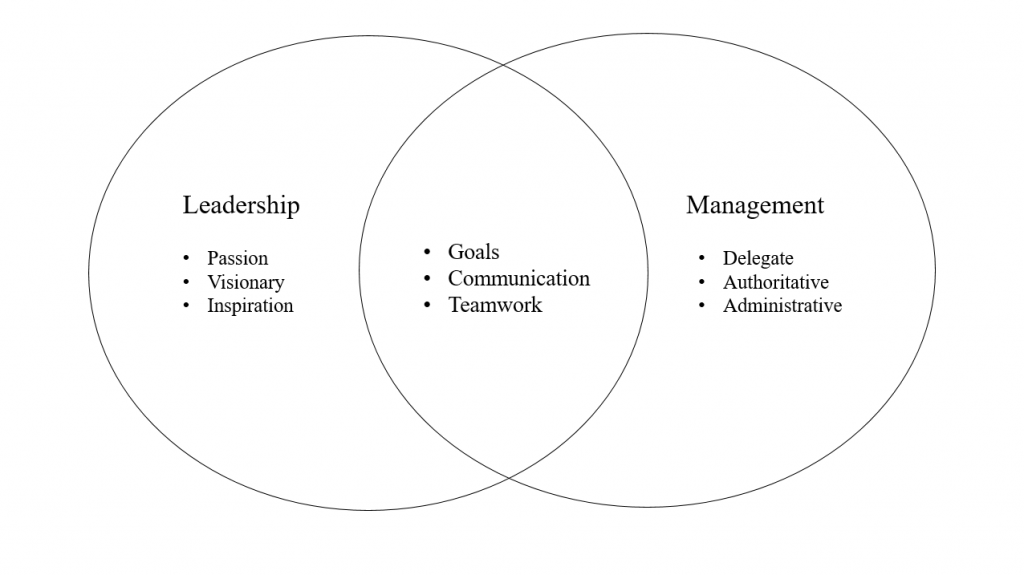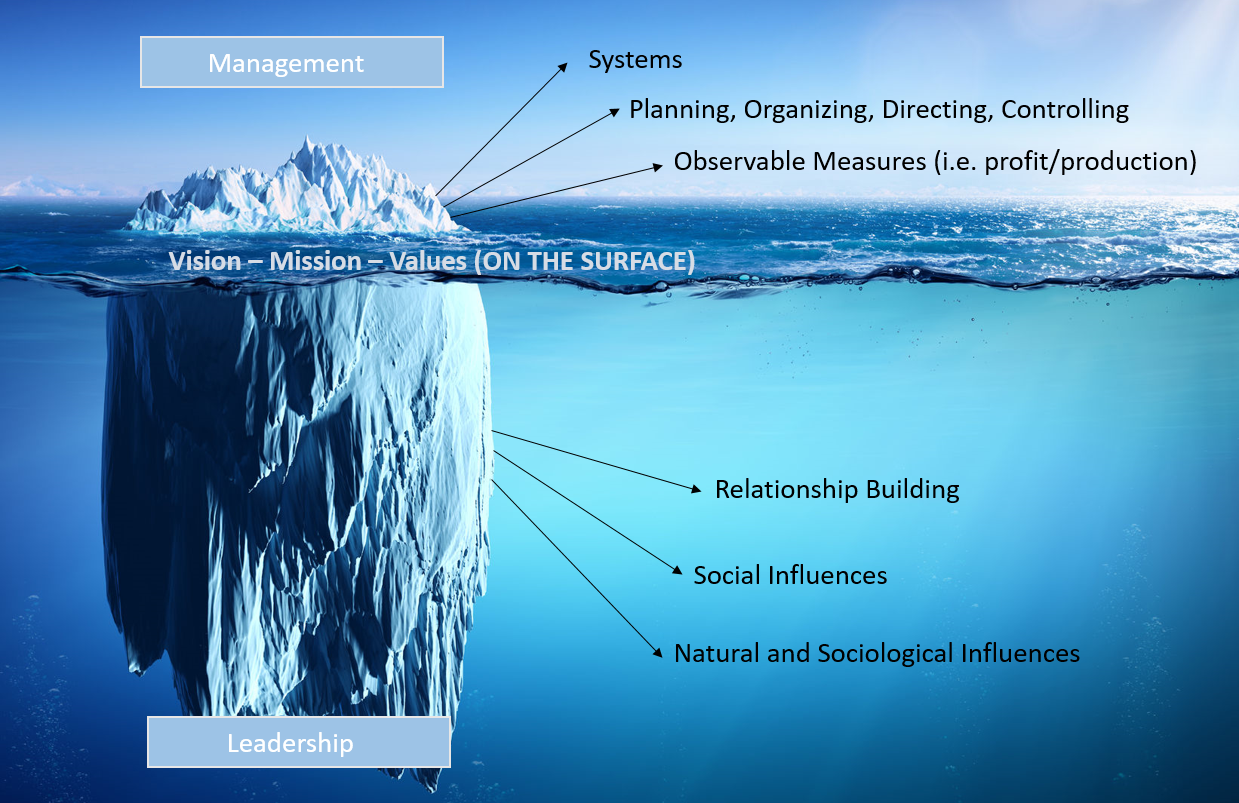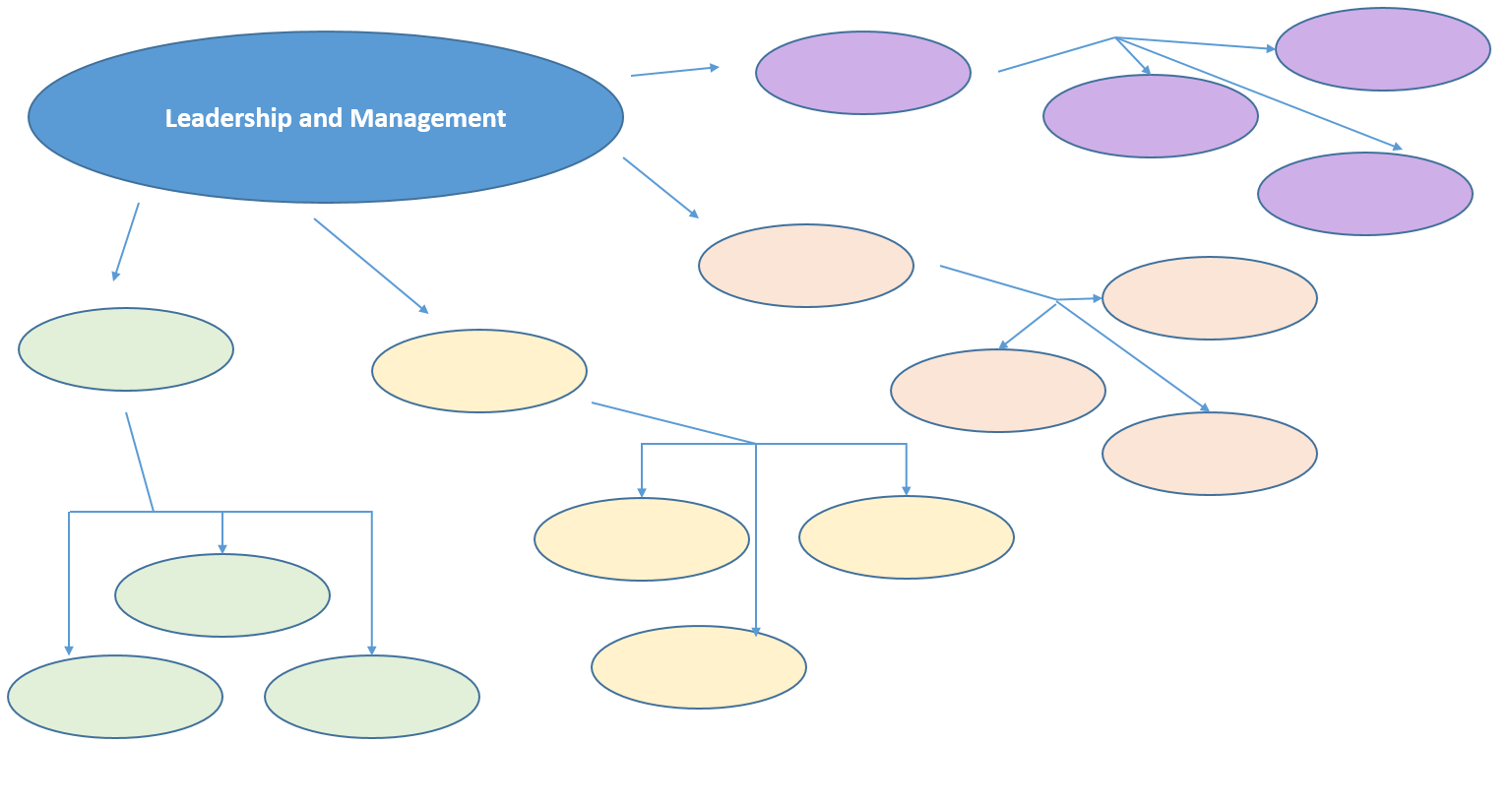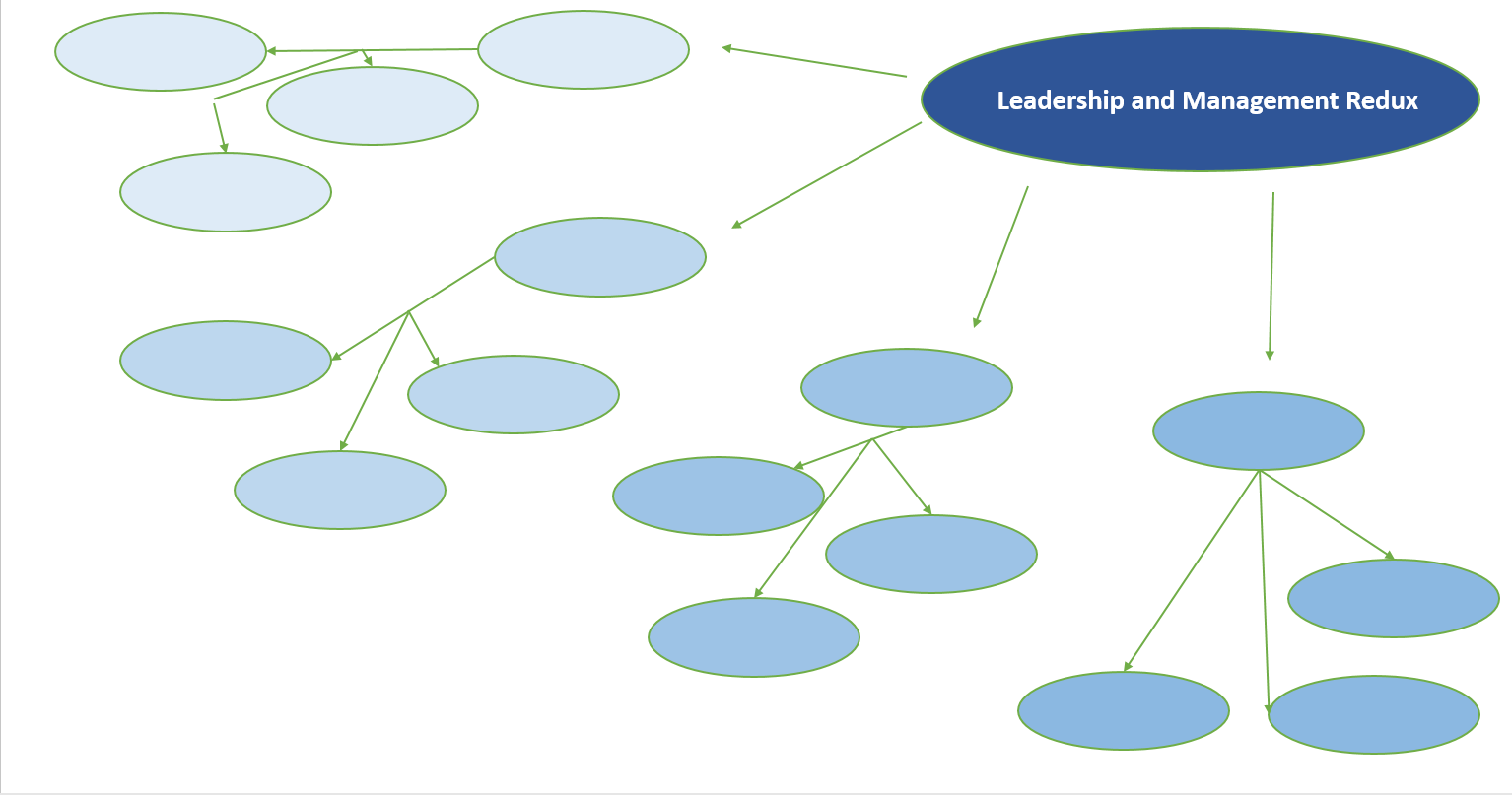12.3 Is There a Difference between Management and Leadership? (The Redux)
As previously stated, a redux can be an understanding of a particular idea or concept. The ideas of leadership and management can be placed in a framework for discerning their traits.. In Chapters 1 through 3, leadership and management were discussed, along with what others defined leadership and management to be.

Looking at this section, is this Venn diagram of leadership and management accurate in showing their similarities and differences? Are leadership and management their own ideals? Each has differences, but are both needed to be an effective member within an organization? Management is the planning, organizing, directing, and controlling the systems of an organization, however, to get to the managing stage of an organization, it must start through social influence: an idea or a relationship between individuals that begin at the onset of a project or organization. Sometimes, this influence starts even before entering the workforce. It may be a world view or specific philosophy developed either naturally or through environmental experiences.
One way to look at leadership and management is as an iceberg. In many ways, this can relate to Edward T. Hall’s Cultural Iceberg Model, which follows behaviors and external beliefs (the seen top of the iceberg) are supported by values, thought patterns, and internal beliefs (unseen, below the surface)[9]. To an onlooker of an organization, the iceberg model can apply: we can see and observe systems in place within an organization, and we know that a specific mission, vision, and value is supporting the management, but we cannot tangibly observe a relationship, social influence, or phenomena. Figure 3 shows the model of leadership and management using the iceberg model.

It is not only what is seen within the organization, it is also what is not seen that can be a catalyst for creating a successful organization. Within the learning organization, it is through effective leadership and management, proper communication channels, ethics, learning theories, job design, decision-making, and teamwork that all relate to Peter Senge’s five disciplines[10]:
- Personal Mastery – building your leadership ability through scaffolding
- Mental Models – natural and sociological influences
- Building a Shared Vision – collaborative and communicative approach to the future
- Team Learning – using communication, decision-making, and collaboration to develop a collective ideal and avoid group-think
- Systems Learning – building up the iceberg moving from leadership to mission, vision, and values and using all of those factors to run learning systems in the organization
Moving forward in future management and leadership endeavors, the most important takeaway is that an iceberg is not an iceberg without it being both above and below the surface. Much like an organization is nothing without the characteristics of leadership and management, the iceberg is not an iceberg without ice above and below water. The iceberg’s parts have the same goals: to float. Floating requires both seen and unseen portions in order to succeed. Leadership and management have the same goals. Leadership and management must also use seen and unseen factors in order to achieve their goals.
Activity: Leadership Map Before and After
Step 1: Use your Leadership and Management Map in Chapter 1.4 from earlier

Step 2: Using the information that you know now, develop a new, restructure, or keep the same map from Chapter 1.4 into a new map below

Questions to Consider
- Did anything change from your initial assessment of leadership and management?
- If so, how do you see leadership and management within a learning organization?
- Do you feel further learning can be achieved in this area? How would you achieve it?
Developed by Edward T. Hall, follows our behavior, and external beliefs (the top of the iceberg, seen) are supported by values, thought patterns, and internal beliefs (below the surface, unseen)

